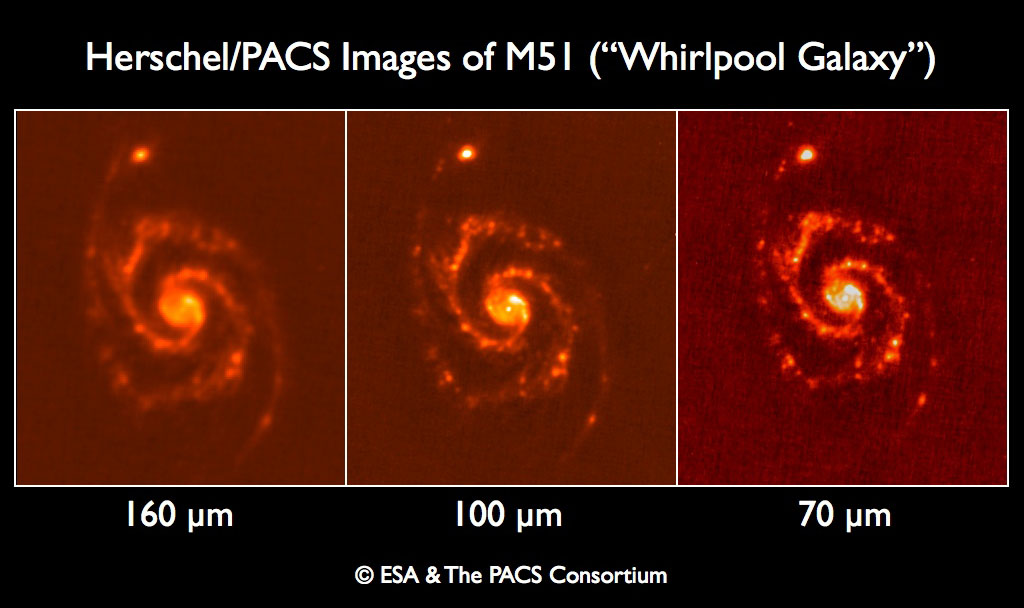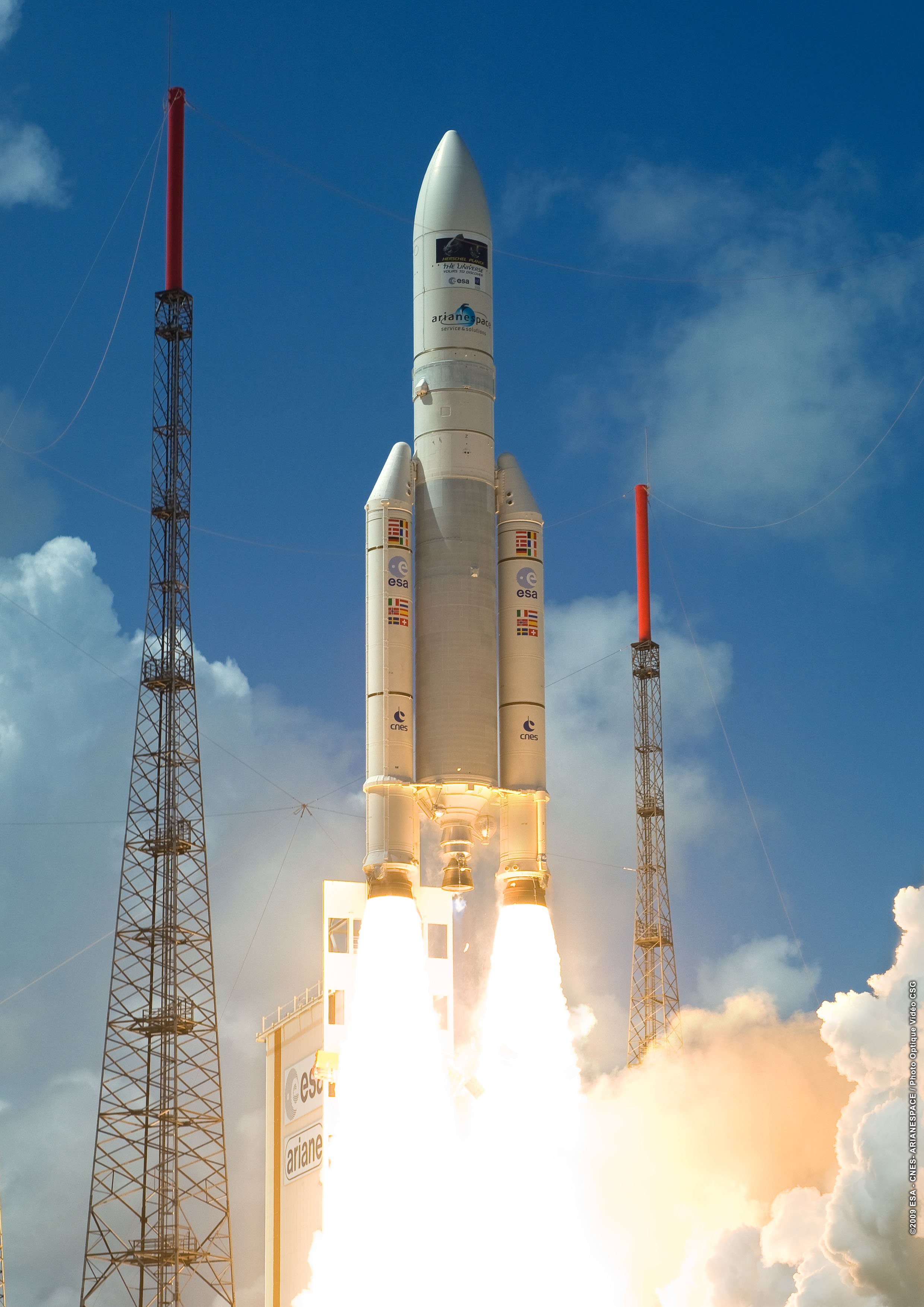Table of Contents
Herschel operations are divided into a series of phases from the moment of launch. Broadly, these are check-out, routine operations and post-operations, each with their individual sub-phases. In theory, each phase should have an exact start and end point but, in reality, the requirements of operations and the differing needs of the three instruments have made the different mission phases blend slowly into each other, with slow transitions and, frequently, no clear start and end point. Similarly, the HIFI anomally meant that HIFI was delayed by about 6 months with respect to PACS and SPIRE in entering routine operations and that it had to return over its tracks for a time and re-conduct check-out activities that had already been completed months earlier.
Overall, Herschel operations have run very smoothly and so some activities could be advanced considerably over the anticipated pre-launch schedule. Similarly, remarkably few check-out activities failed for such a complex mission, thus requiring much less re-planning of tests than might otherwise have been expected.
Roll-out (shown in Figure 1.1), prior to launch, was conducted on 12 May 2009 and, after a flawless countdown, launch occurred at 13:12UT on 14 May. Although there had been storms and heavy rain as the guests were being transported to the VIP area, the clouds disolved and launch conditions were perfect. Figure 1.2 shows the Ariane 5 blasting off with the Herschel and Planck on board. The critical early milestones of fairing release, Herschel separation (at 13:40UT) from the Scylda and signal acquisition (at 13:50UT) were all passed successfully and Herschel began its cruise to Lagrange.
Figure 1.2 shows Herschel, Planck and the Sylda approximately 26 hours after launch, when they were already 226 000km from Earth (approximately 0.5 Lunar Distances). It is already obvious from this image how Herschel and Planck were released into slightly different transfer orbits due their differing injection requirements for L2 orbit. A single injection manoeuvre was made 26h after launch. This injection manoeuvre started at 15:16:25UT and lasted 22.5 minutes, giving a Delta-V of 8.7m/s; effectively, this injection manouevre placed Herschel in its final orbit and was so successful that no further corrections were required apart from the tiny, regular station-keeping burns of typically 15-20cm/s with the thrusters, made every 4-6 weeks to maintain the orbit around L2.

Figure 1.3. A sequence of images taken by British amateur astronomer Richard Miles using the 2-m Fawkes South Telescope in Australia of Herschel (identified), Planck and the Sylda 26 hours after launch at approximately half the distance to the Moon.
After launch a Low Earth Orbit Phase (LEOP) started, an initial phase of check-out started with the telescope closed and the instruments switched off while the operation of the spacecraft sub-systems was checked. At this time the satellite was placed in a Sun-orientation allowing the spacecraft to cool in the shadow of the sunshade. However, given the danger of volatiles outgassed from the satellite condensing on the telescope, the mirror was heated during the initial cooldown phase to avoid it acting as a cold-trap. This period involved checking basic properties of the satellite (centre of mass, moments of inertia) and proper functioning of basic spacecraft sub-systems (Radio Frequency (RF), thermal control, power sub-system, data handling, attitude and orbit control, thrusters, Solid State Recorders (SSR), etc.), at least to the extent that these sub-systems were required for spacecraft operations.
While spacecraft check-out was underway, initial activities to check-out the instruments could commence. The first instrument to be switched on to start payload operations was SPIRE on Day 6 after launch, with PACS and HIFI switch-on on Day 11. Initial switch-on simply consisted of checking that the measured voltages were in the expected range from the telemetry. This led into a long and extremely detailed set of tests and checks of the functionality of each instrument that was the Commissioning Phase.
Once Herschel was successfully launched and injected into the transfer trajectory towards the operational orbit, the spacecraft and instrument commissioning phase started. This consisted of a series of 298 individual tests and activities to check-out all aspects of instrument and spacecraft functionality. A highlight of Commissioning was the opening of the telescope cryo-cover. This cover protected the cryostat from condensation of outgassed volatiles. The cryo-cover was opened at 10:53UT on 14 June. This involved firing explosive bolts to free the cover after which a spring pulled it into an upright, totally open position after a series of oscillations. The oscillations caused the gyros to activate to stabilise the spacecraft pointing (shown in Figure 1.4).

Figure 1.4. The telemetry received at MOC showing the oscillation in gyro response as the cryocover swung open.
With the successful cryocover opening and the encouraging progress of commissioning activities an opportunity was seen to take some early images to make a blind test of the telescope focus and image quality in advance of formal First Light. A series of PACS exposures were defined with a range of bias settings, scanning through the most likely range of values in a test that was termed "Sneak Preview". The resulting images are shown in Figure 1.5, which showed that the telescope focus and alignment were excellent and that the optimum parameters for imaging were close to the best guess values estimated by PACS prior to cryocover opening.

Figure 1.5. The Sneak Preview images of M51 in the three PACS bands, taken blind after cryocover opening.
M51 was selected for several reasons, especially the fact that, apart from being available at the right time and being a large, bright target, the galaxy is a classic infrared target with a lot of structure, so considerable prior imaging existed at similar wavelengths that could be used to check the image quality and ensure that it met expectations.
PV phase was designed to obtain in-flight characterisation of all instruments e.g. in terms of stability, sensitivity, resolution, timing and other calibration parameters. It included the validation of the instrument observing modes and the calibration and data processing of the resulting data. To achieve this, a schedule of astronomical observations and internal calibrations, defined and iterated pre-launch covering a nominal period of 2 months were be executed using normal observatory procedures. This schedule was be based upon an agreed in-orbit calibration plan generated jointly by the ICCs and the HSC. The plan contained a description of all planned calibration activities and associated calibration sources (internal and astronomical) required to characterise fully each instrument.
Each instrument received blocks of time, normally of two days each, to carry out its activities according to the agreed PV plan, giving each instrument "two days on and four days off", allowing data to be processed and new observations prepared. Weekly meetings then examined the progress of the planned tests, adjusting the plan to allow extra time for failed tests to be repeated, where necessary, or for extra tests to be included. PV Phase started 64 days after launch - in line with pre-launch plans - and, by 120 days after launch had delivered the first fully calibrated and usable observing modes for science scheduling.
PV Phase blended progressively into Routine Phase, without a formal end, with days assigned to PV activities becoming increasingly infrequent. Apart from HIFI recovery activities, which ran in four dedicated blocks between 22 January 2010 and 17 March 2010, the last PV day included as such in the observing schedule was 8 December 2009. After this, remaining PV activities to test and validate remaining observing modes have been absorbed into routine calibration activities for each instrument.
As noted above, the PV Phase blended progressively into the "Science Demonstration Phase", in which each approved Herschel science programme had the opportunity to nominate a part of its observations to be carried out early. The aim was to carry out observations and observing programmes that would test the capabilities of Herschel in detail, frequently with difficult and challenging observations. This allowed astronomers to test their observing strategy, compare data quality with expectations and fine-tune their observing programmes, as well as allowing a global overview to be obtained of the performance of the three instruments.
Observations were carried out on a shared-risk basis: astronomers could opt to forego their proprietary rights on data and allow them to be made public at the opening of the Herschel science archive and, in return, would get the time used re-imbursed in their programmes by Herschel; alternatively, they could maintain the data proprietary for one year from execution and have the data counted as part of their Routine Science programme. So, in return for assuming part of the risk of testing observing modes early in the mission, astronomers had the chance to obtain early publication of Herschel data.
Science Demonstration Phase demonstrated that the main mapping modes that are the workhorses of Herschel were essentially ready to go, particularly in its early mission phases, although some extremely useful input was obtained for observing strategies, leading to the recommendations on how to obtain the best sensitivity in observations. Similarly, it gave a lot of valuable information on how best to define spectroscopic observing modes. Early results from Science Demonstration Phase were presented at the Herschel "Initial Results" Workshop at Madrid in December 2009.
The prime period for SDP was defined to be from 15 September to 15 December 2009. Those SDP observations that could not be completed by 15 December because of target visibility concerns, or because the required observing mode had not been released, were given the highest priority for telescope scheduling over the period up to 30 April 2010, when any remaining SDP observations reverted to being treated as Routine Science observations.
After the HIFI anomally, it was decided to define a variant of SDP for HIFI observers to be executed as rapidly after HIFI recovery as time permitted. This was the HIFI Priority Science Programme, or PSP. Two blocks of telescope time in March and April were reserved for intensive HIFI observing campaigns. Observations were divided into PSP1 (highest priority) and PSP2 (second priority) to fill these blocks of time efficiently, allowing a substantial part of the Herschel's HIFI observations to be carried out at the earliest possible date, after which HIFI would enter the standard Mission Planning cycle with a set number of days assigned each 4 weeks, with top priority going to scheduling remaining PSP observations. A special HIFI initial results workshop was arranged in Leiden in April 2010 to present a first look at PSP data and checkpoint for observing strategies.

